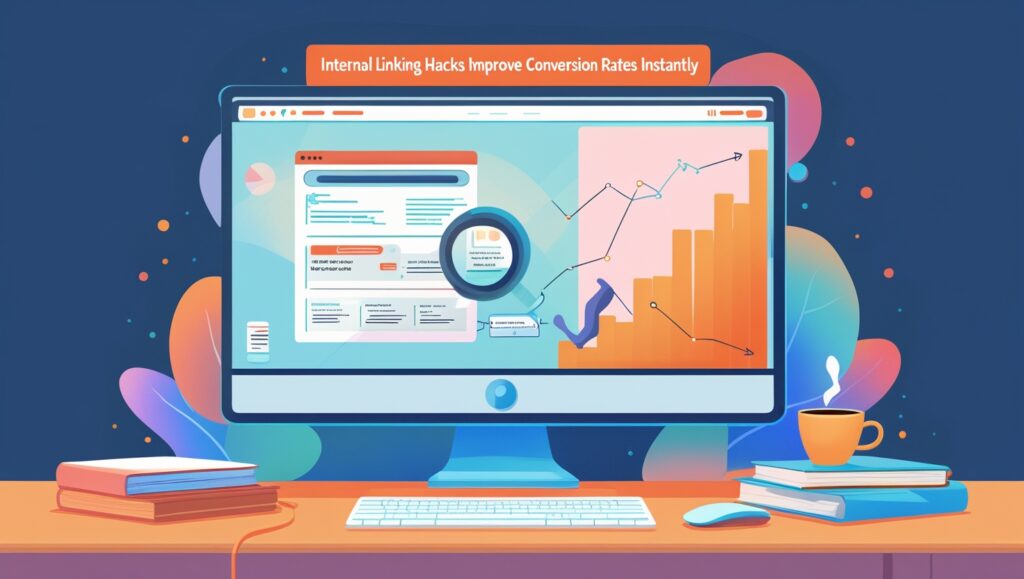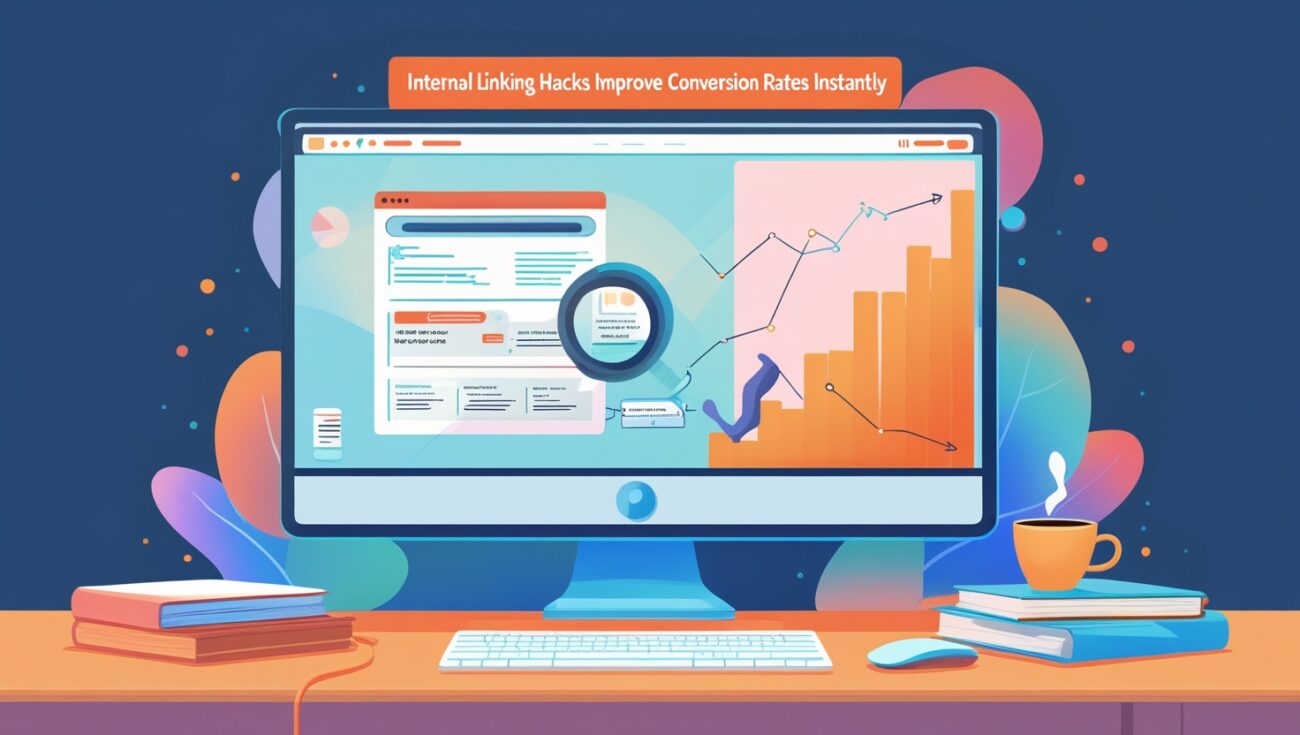Internal Linking Hacks That Improve Conversion Rates Instantly
For years, I was obsessed with getting more traffic. I thought that if I could just get more visitors to my website, my conversion rates would naturally increase. I was wrong. I had decent traffic, but my conversion rates were stagnant. I was spending all my time on SEO and content creation, but I wasn’t getting the return on investment I wanted.

Table of Contents
It wasn’t until I started to look at my website as a conversion funnel, not just a collection of pages, that I realized my mistake. My visitors were getting to my website, but I wasn’t giving them a clear path to take the next step. The solution was surprisingly simple and already in my control: a few simple internal linking “hacks” that instantly improved my conversion rates. Here are the secrets I discovered that helped me turn my existing traffic into paying customers and leads.
The Secret Connection Between Links and Conversions
Internal links are the roads on your website. Most people use them for SEO, which is great, but they are also a powerful tool for guiding a user from an informational blog post to a high-converting page.
- The Conversion Funnel: A visitor lands on your site from a Google search for an informational keyword. Your goal is to guide them down the funnel—from “informational” to “transactional.” Internal links are the most effective way to do this.
- Why it Works: You are reducing the friction for your user. You are providing them with the exact solution they are looking for, at the exact moment they are looking for it. This makes them far more likely to take a desired action.
The Instant Conversion-Boosting Hacks
Hack #1: The Product-Centric Internal Link
This is the most direct way to boost conversions. Go to your blog posts that mention a product or service you sell and add a direct link to the sales page. For example, if you have an article on internal linking, you can add a link to your internal linking tool or service. Use a clear, commercial-intent anchor text like “internal linking software” to make it obvious to the user.
Hack #2: The “Related Case Study” Link
Social proof is a powerful conversion tool. Find a relevant blog post and add a link to a case study or a customer story that shows how your product or service helped someone just like them. This builds trust and makes it easier for a user to convert.
Hack #3: The “Deep Dive” Link to a Lead Magnet
Not every visitor is ready to buy, but they might be ready to become a lead. Find a popular blog post and add an internal link to a free resource, like an e-book, a free checklist, or a webinar, that requires an email address. This is a powerful, instant lead generation hack.
Hack #4: The Internal Testimonial Link
Find a relevant blog post and add an internal link to a page on your site that includes customer testimonials. This builds trust by providing social proof directly within the context of your content.
The Tool That Makes This Practical
I know that finding all of these opportunities manually is difficult and time-consuming, especially if you have a large website. That’s where internal linking automation comes in. A good tool can scan your entire site and provide a list of every potential conversion-boosting link, all in one place. It’s the difference between spending hours on a tedious task and getting a list of high-impact opportunities in minutes. Ready to turn your website into a high-converting sales machine? I highly recommend a tool like Linkbot.
Conclusion: Turn Traffic into Profit
A small change in your internal linking strategy can lead to an instant, measurable improvement in your conversion rates. By using a few simple hacks, you can stop seeing your website as just a collection of pages and start seeing it as a high-converting sales machine. Stop leaving money on the table and start building a high-converting website today.
My journey taught me that a major mistake is seeing SEO as a mystery. By implementing this conversion-focused linking strategy, I made the mental shift from being a spectator to an active participant in my website’s success. This simple realization took the overwhelm out of SEO and turned it into a series of logical, manageable steps that I could control.
The long-term, compounding effect of this strategic approach is what makes it so powerful. Each time you add a thoughtful, relevant link, you are not just performing a task; you are building your website’s authority, one link at a time. These small, consistent improvements add up to a significant competitive advantage over the long term, making your website an increasingly powerful asset.
I can say from personal experience that there is a special kind of satisfaction that comes from seeing a direct correlation between a new link and a ranking boost. It’s the feeling of taking a tangled mess and organizing it into a clean, logical network. The result is a website that just feels better to navigate, for both users and the people managing it.
A clean internal link profile also has a huge impact on your website’s overall trustworthiness and authority. When a user or a search engine bot lands on your page and sees a clear network of interconnected, relevant articles, it signals that you are a serious, comprehensive resource on the topic. This kind of professional organization is exactly what Google looks for.
The most important part of this foundational skill is building a consistent habit of linking. It’s not about a single audit and then forgetting about it. A good website is a living thing, and it needs regular maintenance to ensure your internal links stay clean, which is a key part of long-term SEO success.
I felt like I was finally in the driver’s seat of my SEO. For years, I had relied on external factors, which felt like I was giving up control of my SEO destiny. But by mastering a simple task like building my internal links, I was proactively building my site’s authority from the inside out, on my own terms, which was an empowering and exciting feeling.
By implementing a strategy that serves both SEO and conversions, you are also directly addressing Google’s E-E-A-T framework. You are demonstrating expertise by creating topical clusters, you are showing authority by linking from strong pages, and you are providing a better user experience, which is a key part of what Google looks for in a trustworthy website.
I’ll never forget the first time I applied my new internal link strategy to a page that was struggling to rank, and it shot up in the search results almost overnight. This was my “aha” moment. I realized that a strategic, well-placed link from a high-authority page was far more powerful than I ever thought possible.
One of the greatest benefits I got from using an automated tool to manage my link profile was the “to-do” list it provided. Instead of being overwhelmed by the sheer size of my website, the tool gave me a prioritized, actionable list of fixes to make. It transformed a monumental, frustrating task into a series of manageable steps that I could tackle in just minutes.
It’s crucial to understand the difference between a simple, generic link and one that’s part of a strategic, mapped plan. A simple link is a one-off connection. A link that’s part of a plan is a purposeful part of a larger network, designed to pass authority and guide a user. The latter is far more powerful.
Ultimately, mastering internal linking is a simple but powerful strategy that transforms a website’s foundation. It’s a low-cost, high-impact fix that can instantly improve your site’s health and SEO performance. It’s the kind of foundational SEO work that every website owner should prioritize.
My final piece of advice is to not be intimidated. Don’t worry about the high cost of manual labor; just focus on making your website a better place for your readers. You will be amazed at the progress you make and the results you can achieve.

